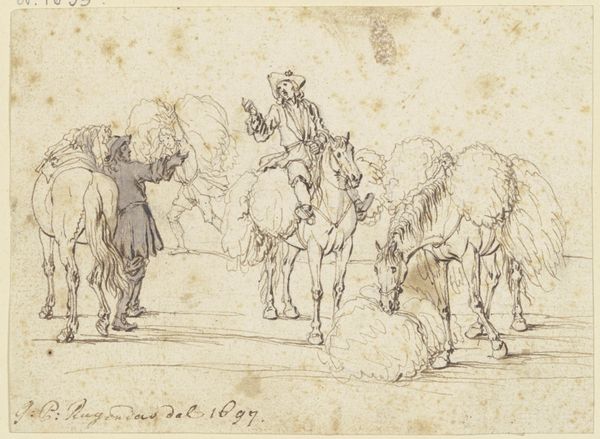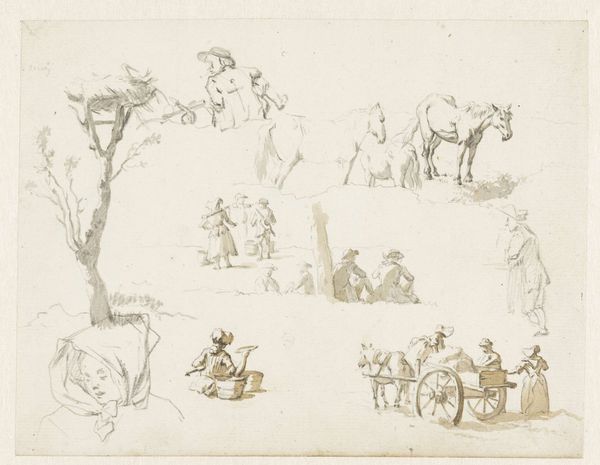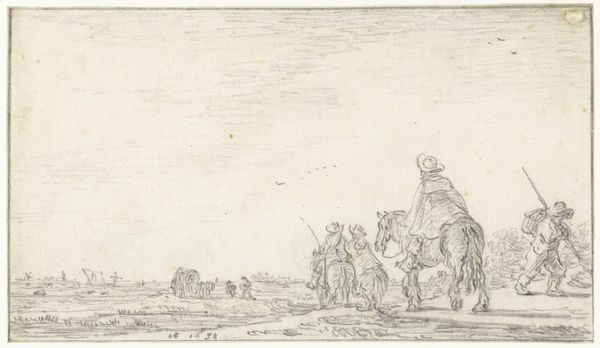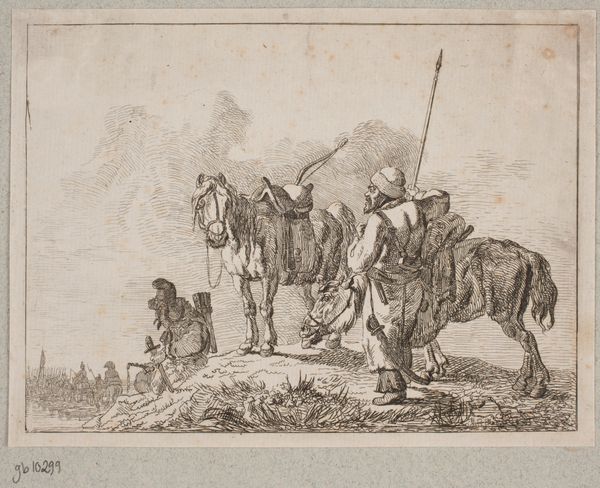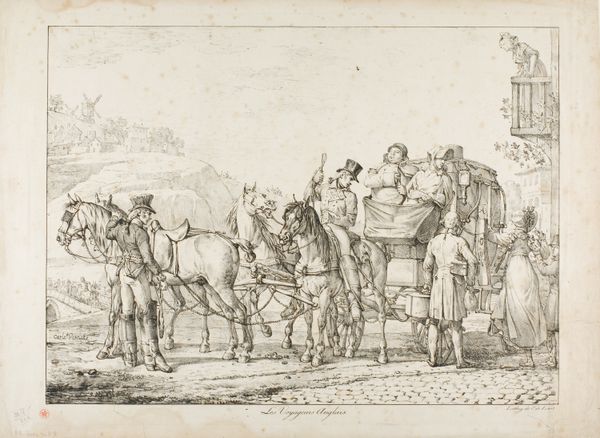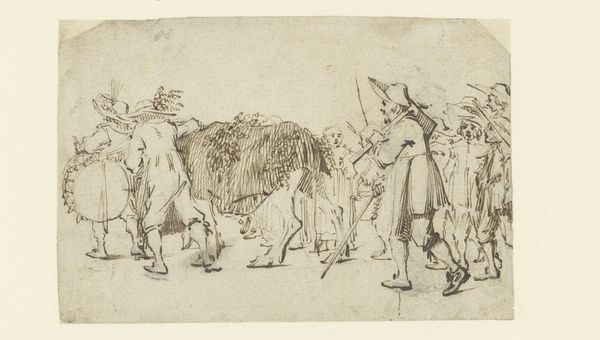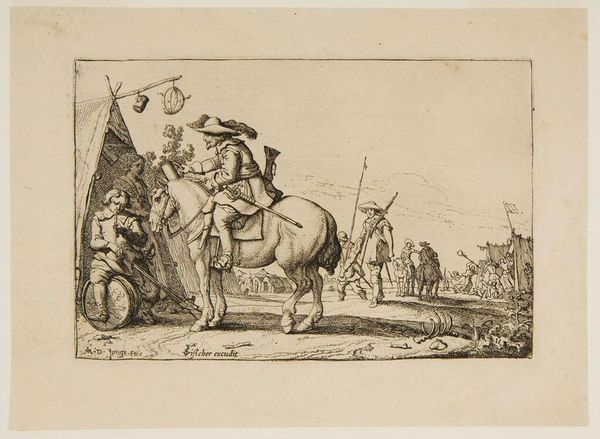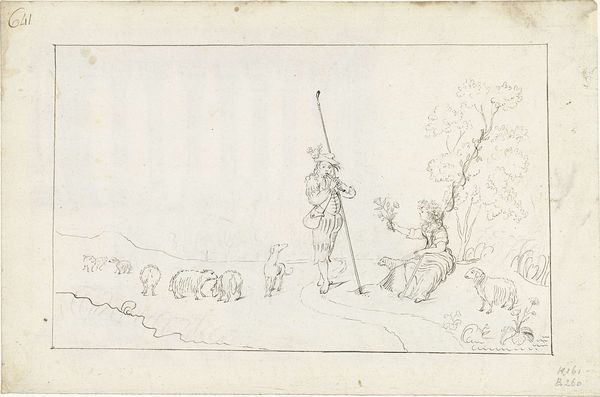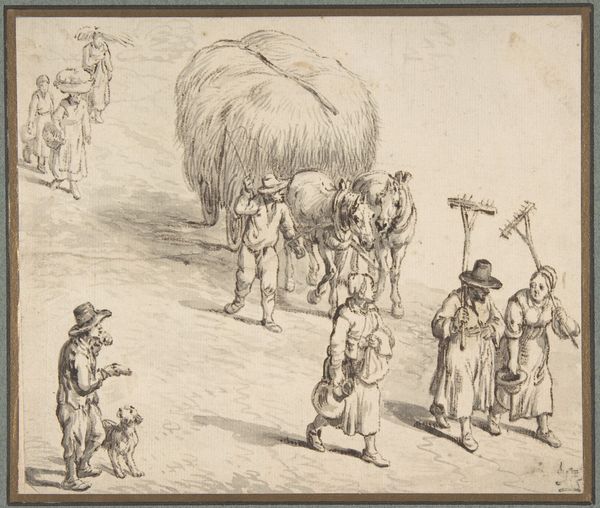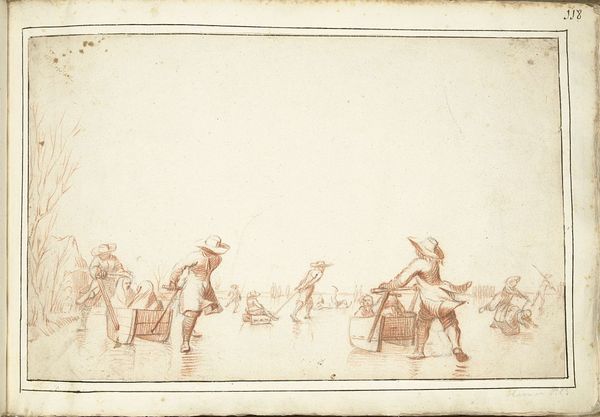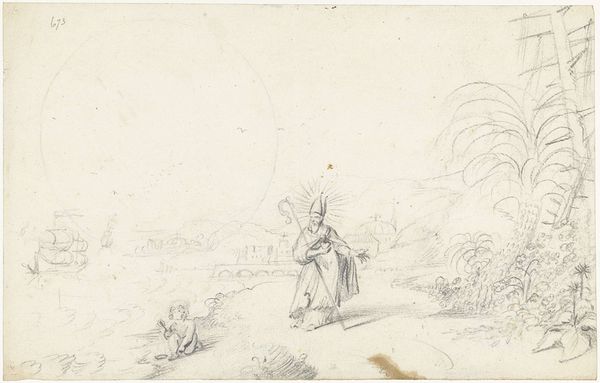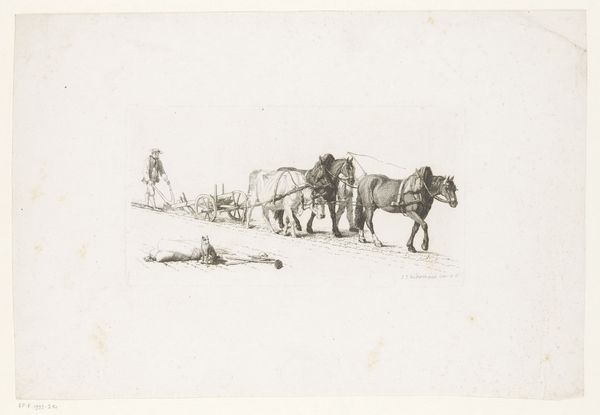
drawing, pencil
#
drawing
#
landscape
#
romanticism
#
pencil
#
genre-painting
#
realism
Dimensions: height 160 mm, width 205 mm
Copyright: Rijks Museum: Open Domain
Curator: Here we have Pieter Barbiers’ “Studies van landlieden,” dating roughly between 1782 and 1837. A series of pencil drawings depicting rural life. What strikes you most about this work? Editor: Well, immediately, it’s the material simplicity. Just pencil on paper, yet it captures so much about daily life. It's quite raw, wouldn't you agree? Curator: Precisely. Consider the materiality. Barbiers uses readily available, inexpensive materials – pencil and paper. This suggests a democratized approach to artmaking, less about high art and more about observing and documenting the labor of ordinary people. Notice how he captures the texture of their clothes, their tools… what does that say to you? Editor: It highlights the means of production. We see the land, the animals, and the physical exertion. There’s a connection between the people and their work…almost an intimate relationship. Are you suggesting it challenges the traditional view of art being detached from the working class? Curator: Absolutely. He’s elevating everyday labor to the level of art, using humble materials. This connects to a broader social context – the rising interest in peasant life during the Romantic period, but not necessarily in an idealized way. It focuses on the ‘how’ rather than simply the ‘what.’ What can we say about the choice of the pencil as the only medium? Editor: Perhaps he’s emphasizing accessibility or sketching a preparatory study. Could the quick strokes also convey a sense of immediacy, mirroring the urgent nature of the work? It is not about capturing an image, but the material context that defines the landscape in the artwork. Curator: Exactly. So we see an approach to art that foregrounds materials and their link to production, highlighting the otherwise unseen hands that shaped society. Editor: This materialist approach really shifts my perception, viewing this as not just a simple landscape but as a complex commentary on labor and the value we assign to different kinds of work. It’s interesting to realize art can serve also to raise questions.
Comments
No comments
Be the first to comment and join the conversation on the ultimate creative platform.
